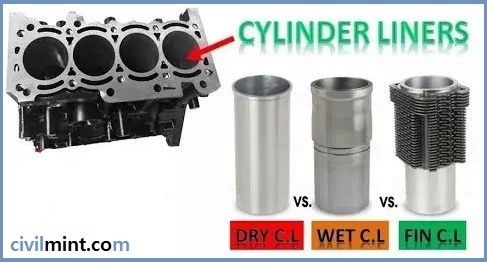A cylinder liner is a sleeve placed in the bore of a cylinder block to create a cylindrical shape. The engine piston moves back and forth on the cylinder liner. It is a key part of automobiles that forms the smooth inner surface of the engine.

Cylinder liners are commonly used in engines with aluminum alloy cylinder blocks. This is because linerless aluminum alloy engine blocks have poor wear resistance and can deform at high temperatures. Therefore, linear is used for better surfaces that can withstand high temperatures and high pressures.
The lifestyles cycle of the cylinder among its re-bores varies consistent with the subsequent factors:
- Corrosion
- Abrasion
The corrosive products produced after the combustion of the air-fuel mixture cause cylinder corrosion.
Abrasion is highly dependent on atmospheric conditions and the effectiveness of oil and air filters. Dusty air is very dangerous as it increases cylinder wear.
Corrosive products formed during the combustion of fuel-air mixtures cause corrosion of cylinders. Acidic moisture in the cylinder walls also accelerates corrosion at low temperatures. Cylinder liners prolong engine cylinder life.
High-quality materials are used in the production of liners. The liner can be easily removed and replaced. The cylinder liner must have good wear resistance and the ability to retain oil to lubricate the surface between the piston ring and the wall.
Table of Contents
The Function of the Cylinder Liner
The cylinder liner is one of the most important parts of a piston pump or engine. This is the area in which the piston moves. The main function of the cylinder liner is to reduce leakage and provide a smooth sliding surface and space for coolant heat transfer.

The cylinder liner is cylindrical. It is made from a special iron alloy containing chromium, nickel, manganese, and silicon.
Types of Cylinder Liners
- Dry liner
- Wet liner
- Finned cylinder liner
Cylinder Liner Construction Material
- Chromium 0.7%
- Nickel 2%
- Silicon 2%
- Carbon 3.5%
- Sulfur 0.05%
- Manganese 0.6%
- Phosphorous 1.5%
